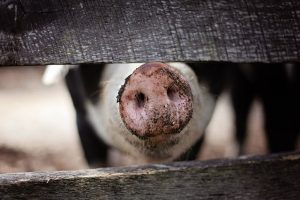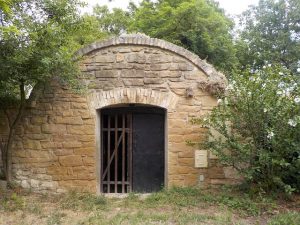I’m sure you’ve heard the saying “a picture is worth a thousand words,” right? But does it really take 1,000 words to create a vivid picture?
Check out this short paragraph from Charlotte’s Web:
Fern came slowly down the stairs. Her eyes were red from crying. As she approached her chair, the carton wobbled, and there was a scratching noise. Fern looked at her father. Then she lifted the lid of the carton. There, inside, looking up at her, was the newborn pig. It was a white one. The morning light shone through its ears, turning them pink.
It’s only 61 words, but it creates a vivid picture, doesn’t it? You can easily imagine what Fern looks like as she comes down the stairs. You also get a clear image of the carton and baby pig inside.
This is a prime example of imagery. It creates a mental image that allows the reader to visualize the scene.
That’s all well and good, but other than saying that imagery creates a visual image, what else is there to say about it?
Here are a few tips to help you analyze imagery in literature the smart way.
How to Analyze Imagery in Literature the Smart Way
When you think of imagery, you usually think of visual imagery. But a mental image is much more than what you see.
Think about standing in a crowded elevator with a group of people who just got out of spin class. What you see might not be the most memorable part of this scene. The smell of a bunch of sweaty people in a tiny elevator will likely be the most vivid part of this image.
Thus, keep in mind that imagery in literature can involve all of your senses: sight, sound, taste, touch, and smell.
Let’s take a look at imagery in both poetry and prose, and analyze imagery the smart way.
How to analyze imagery in poetry
As you already know, poets are known for using all sorts of literary devices, including symbolism, rhyme, meter, and metaphors. They also use plenty of imagery.
Poets often use imagery to set the entire mood of the poem. They create a feeling they wish to express and hope the reader feels it as well.
Let’s take a look at “Root Cellar” by Theodore Roethke and examine how the poet uses imagery:
Nothing would sleep in that cellar, dank as a ditch,
Bulbs broke out of boxes hunting for chinks in the dark,
Shoots dangled and drooped,
Lolling obscenely from mildewed crates,
Hung down long yellow evil necks, like tropical snakes.
And what a congress of stinks!—
Roots ripe as old bait,
Pulpy stems, rank, silo-rich,
Leaf-mold, manure, lime, piled against slippery planks.
Nothing would give up life:
Even the dirt kept breathing a small breath
It’s pretty easy to see the imagery in this poem, but what is there to say other than Roethke paints a picture of a root cellar?
Start with the obvious: what you see when you read the poem. Roethke creates a scene of a dark, dank, musty old root cellar. It smells bad and is full of weeds.
Most of the poem is dark, maybe even a bit depressing. But the final lines offer a sense of hope as the speaker states that, even in this environment, “Nothing would give up life.”
Even dirt is alive and breathing. (This, of course, might be compared to the human condition. People often struggle in deep, dark spaces, but they continue on, fighting for life and happiness.)
Next, let’s move on to literary terms that poems often use to help exemplify imagery.
In addition to imagery, “Root Cellar” contains:
- Alliteration (use of the same beginning sounds in words). Example: “Bulbs broke out of boxes” and “dangled and drooped.” Alliteration creates a sense of rhythm to the poem and an image of the bulbs.
- Simile (a comparison to seemingly dissimilar objects). Example: The shoots had “long yellow evil necks, like tropical snakes.” This comparison not only helps readers visualize the the length and color of the weeds but also creates an image of life. The weeds are moving, growing, and slithering like snakes.
- Connotation (assigning meaning to a word beyond a literal dictionary definition). Example: “Roots ripe as old bait.” Readers will likely assign a negative connotation to this phrase since they imagine the smell. This phrase also adds sense of smell to the already-present visual imagery.
One final takeaway when analyzing imagery in poetry: carefully examine every word. Poets aren’t wordy. They choose wisely and make every word count, so you better believe that, if a word is in a poem, it’s there for a reason.
After you’ve examined each word under the microscope, you can start to put your analysis into place to draft a poetry paper.
Here are two resources to help:
How to analyze imagery in prose
Analyzing imagery in prose, such as a short story or novel, is similar to analyzing imagery in poetry, but you’re working with complete sentences, paragraphs, and images built into a larger scope of a story.
Often, the writers of stories and novels aren’t using imagery as the sole focus of their work, but they’re generally trying to make a point. The imagery is there for a reason.
Authors often use imagery to set the scene and help readers put themselves in the characters’ shoes.
To illustrate, here’s an excerpt from The House on Mango Street by Sandra Cisneros:
But the house on Mango Street is not the way they told it all. It’s small and red with tight steps in front and windows so small you’d think they were holding their breath. Bricks are crumbling in places, and the front door is so swollen you have to push hard to get in. There is no front yard, only four little elms the city planted by the curb. Out back is a small garage for the car we don’t own yet and a small yard that looks smaller between the two buildings on either side. There are stairs in our house, but they’re ordinary hallway stairs, and the house has only one washroom. Everybody has to share a bedroom—Mama and Papa, Carlos and Kiki, me and Nenny.
Here, Cisneros creates a vivid image of the house that the child narrator will soon move into. The author uses personification to bring the windows to life (as they’re “holding their breath”), but the other literary devices often seen in poetry are absent in this example.
Instead, the author focuses on specific word choices to create the image. You can see the small, red, crumbling house. You can visualize a house crammed between other houses with only a tiny yard and young trees.
The author also includes tactile imagery as you can imagine yourself struggling to open a door that is “so swollen you have to push hard to get in.”
It’s obvious that the author includes imagery to describe the scene. But as you write your essay, it’s important to ask yourself why the author includes these specific images. What purpose do they serve within the larger context of the story?
In this case, the author includes this powerful imagery so that readers can sense the disappointment and shame the child feels as she looks at her new home.
“They” (presumably her parents) had told her about a new house they were moving to, but it’s apparent that they described the house differently. The child doesn’t see the house as anything she wants to live in.
She simply sees a run-down, tired old house that isn’t at all what she imagined.
The purpose is to allow readers to stand in the character’s shoes. The imagery creates a mood of sadness and disappointment. It helps readers connect with the character, learn more about the character as an individual, and learn more about the character’s role in the story.
If you have a good sense of imagery but are looking for more help putting your ideas into essay format, check out these posts:
A Smart Analysis
Hopefully, the tips I’ve included here make you feel more confident in writing a smart analysis about imagery in literature.
Need a little more insight? Look at how other students have written about imagery in literature. Here are a few example essays:
- A Literary Analysis of the Imagery in Macbeth by William Shakespeare
- An Analysis of Animal Imagery in a Doll’s House by Henrik Ibsen
- An Analysis of the Widespread Use of Sexual Imagery in Greek Literature
Working with a specific piece of literature? Search for sample essays about it.
One final piece of advice: don’t start writing without a little bit of planning. Spend time taking notes about imagery as you read. Jot down examples and what you think they mean. Once you’ve read the literature and taken notes, outline your ideas.
When you have a draft in place, find someone (like a professional Kibin editor) who is pretty smart about analyzing imagery in literature and can provide expert feedback. That way, you won’t have to imagine a good grade on your paper. You’ll earn it!



